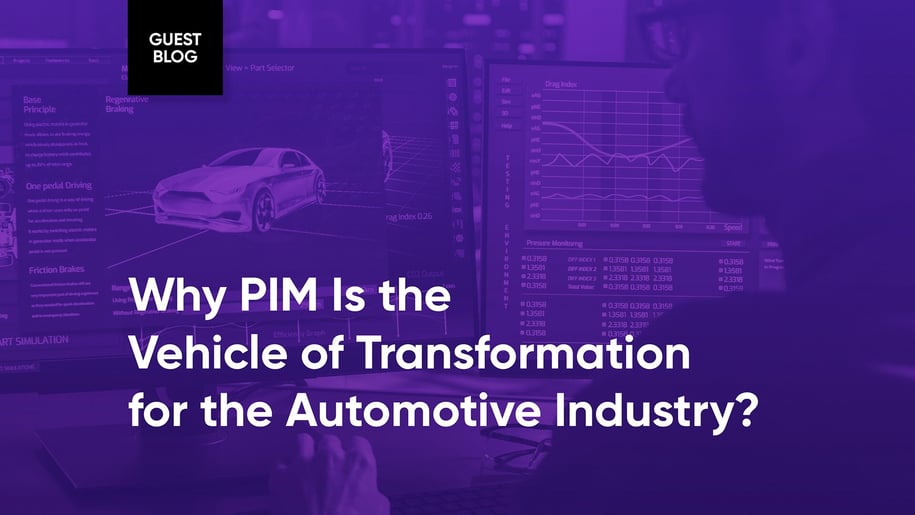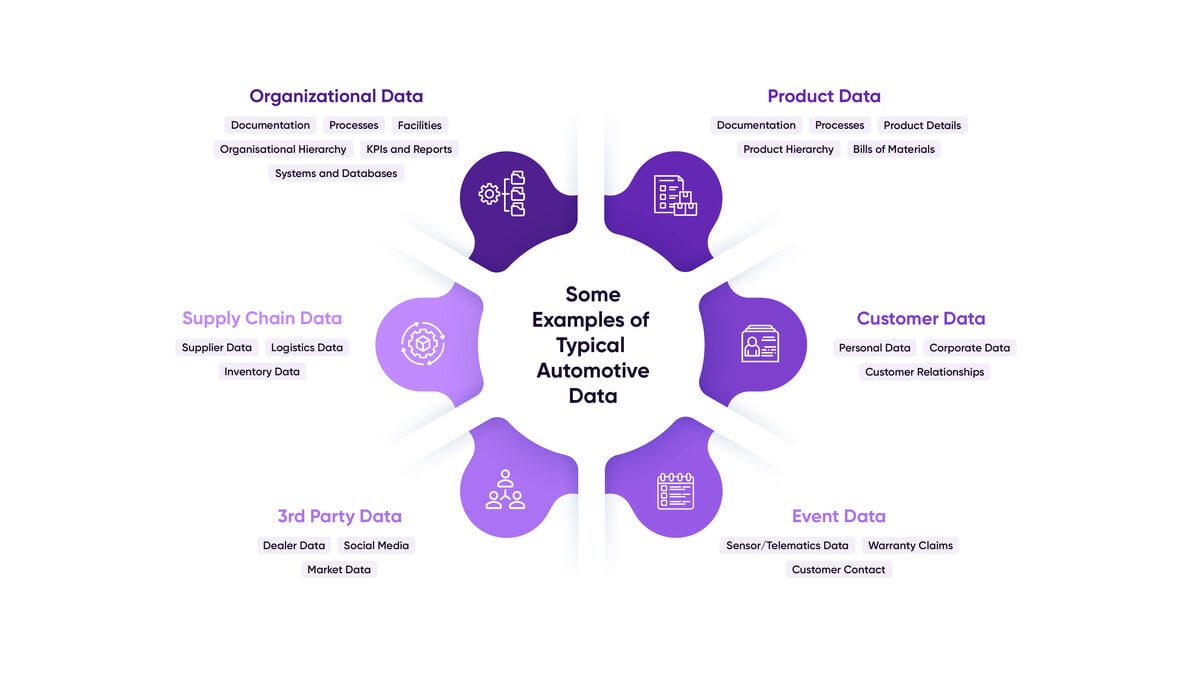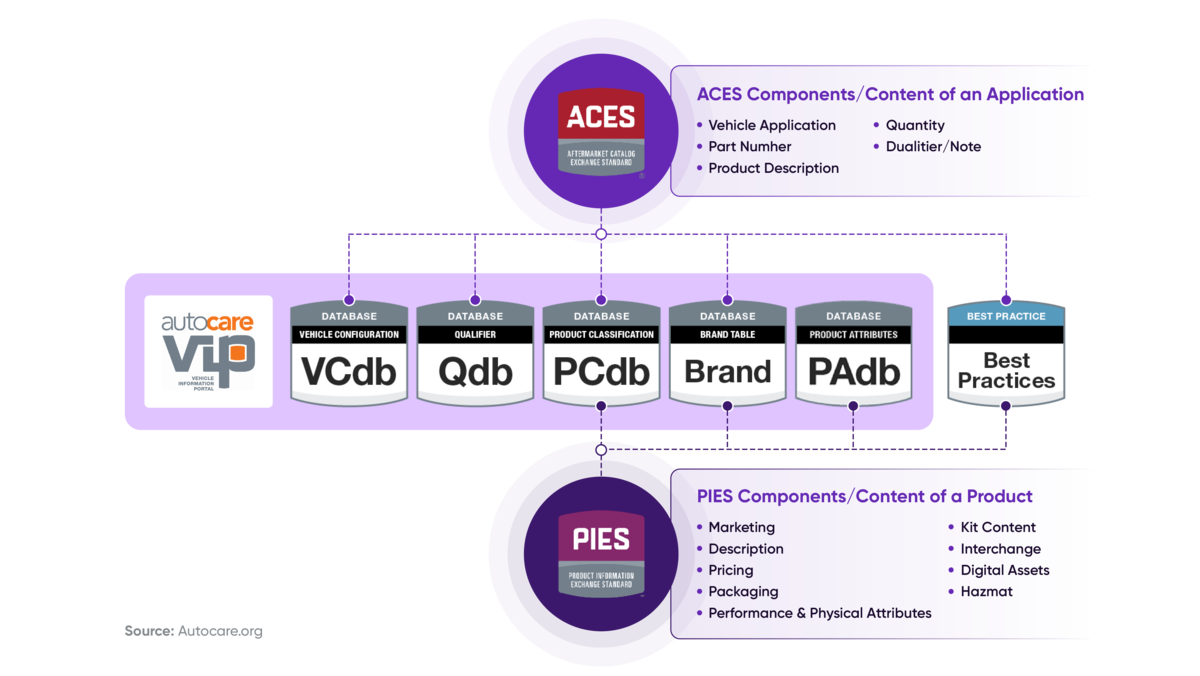
PIM has become an indispensable solution for auto companies to manage their complex data, streamline operations, enhance CX and stay competitive.
Introduction
Whether it is about managing parts numbers, naming conventions or vehicle configurations, designing and implementing a system to govern global dealerships across multiple countries, making digital shopping experience (yes, in automobiles!) a reality, streamlining operations with parts or accessories suppliers, or adopting industry-specific data standardizations such as Aftermarket Catalog Exchange Standard (ACES)/Product Information Exchange Standard (PIES)—the role of a product information management (PIM) solution is turning out to be not just inevitable but uniquely significant.
While various challenges have plagued the automotive industry such as multiple data sources, complex data sets, data sharing with downstream systems, the need for PIM was born primarily out of the vastly spread automotive supply chain network. This article takes a granular look at why PIM solutions are an obvious choice for the automotive industry.

Vast, Complex, and Diverse Data
The automotive industry's extensive range of vehicle types, models, trim levels, engine choices, and optional features creates significant complexity and diversity. And coupled with the surge in technological integration, data overload can be massive, making it greatly challenging to manage enormous amounts of technical specifications, accessory information and variant details. Furthermore, ensuring accuracy and consistency in vehicle configuration data across marketing materials and sales channels remains a crucial aspect. Discrepancies in data before (affecting the end customer), can render the entire operation of assembling automobiles futile leading to costly errors and irreparable loss of brand image. Hence, in the automotive industry, a PIM system has turned into a non-negotiable need for managing intricate and diverse data landscapes.
Stiff Competition and Challenging Product Lifecycle Management
Managing the product lifecycle in the automotive industry involves tracking changes in vehicle configurations over time, which is vital for historical and regulatory purposes of the vehicle. Besides, agility is needed to respond to the competitive pressure and market shifts by swiftly introducing new configurations.
However, this can become challenging for organizations with inflexible data management systems. In addition, as many customers tend to keep their vehicles for longer periods, maintaining and accommodating ongoing changes precisely becomes paramount. Therefore, through efficient product data management, automotive companies can meet market demands, adhere to regulations, and support customers throughout the extended use of their vehicles—all while staying competitive.
Following Standards like PIES and ACES
A PIM solution helps automotive organizations adhere to industry standards like PIES and ACES to enhance product data management and communication across the supply chain. PIES facilitates efficient management and exchange of product information, including pricing, delivery, content, and attributes. While ACES defines the standard for communicating product information among suppliers and other stakeholders. By organizing data in these universal formats, a PIM platform ensures top-notch data integrity. This data standardization minimizes inefficiencies associated with maintaining data in multiple formats, thereby allowing companies to provide comprehensive product information while significantly reducing operational costs. At the same time, it streamlines data management processes for manufacturers and sellers.

Delivering Data to Different Platforms and Markets
Traditional inventory management systems, long used for maintaining product data, often lead to inaccuracies and inefficiencies due to the need for multiple data copies tailored to each supply chain partner's preferred format. A PIM system has revolutionized how automotive parts suppliers disseminate information to various distributors, retailers, and wholesalers, removing any hindrances from business operations. By harmonizing the process of centralizing and standardizing product information, suppliers can efficiently export data in various formats, including XLS/CSV for digital use and printed formats for catalog management, brochures, and leaflets. This technological advancement simplifies processes and enhances the overall productivity and efficacy of the supply chain while greatly enhancing internal workflows.
Product Customization, Customer Experience and Sales
PIM facilitates advanced data care (for various automotive attributes from body styles to technical specifications), expediting updates, and curtailing the potential for errors so a superior customer experience comes into effect. As a result, customers are empowered to effortlessly explore cars, as detailed information is meticulously showcased. PIM elevates this journey by offering a user-friendly interface, intuitive product customization options, and real-time data updates. The result? A satisfied customer base bolstered sales figures and the brand's ascension within the competitive automotive landscape. And as the business grows, expands its product line, enters new markets, or introduces innovative features, PIM remains a scalable solution that adapts to organization’s evolving needs, ensuring reliability for the long haul.
Wrapping Up: Leveraging the Superpower of Data with PIM
The era of digital transformation has brought with it the need for precise product data management, and the automotive industry is no exception. As customers increasingly engage online for parts purchases and interactions with original equipment manufacturers (OEMs), retailers, and auto shops, leveraging comprehensive digital catalogs becomes essential. A robust PIM solution, adhering to industry standards like ACES, PIES, centralizes and enriches product data, ensuring seamless integration into online product pages ensuring perfection to support scalability needed for new vehicle models and market expansion. It also enhances customer engagement by providing detailed descriptions, images, and instructional videos. As an industry with already globalized networks and dependencies, the ability to convey parts information accurately, swiftly, and efficiently is a basic requirement. With PIM systems, automotive organizations can reap significant benefits, including improved market responsiveness and reduced time-to-market, all while positioning the brand at the forefront of innovation within the automotive sector.
.png?width=520&height=294&name=Blog%20Header%20Template%20Nov%202024%20(1).png)

